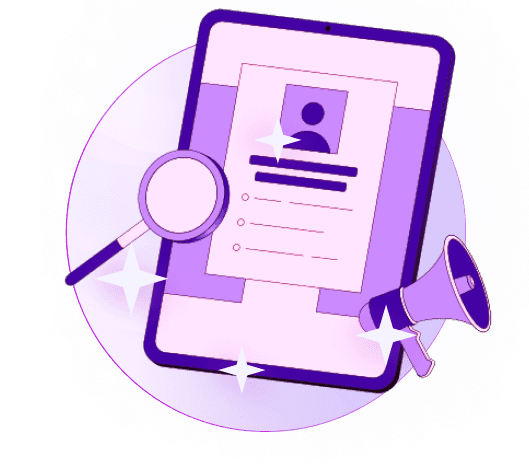Blogs
Articles

8 Best Practices for Using AI to Analyze Cold Email Performance and Improve ROI
In the competitive world of sales and marketing, cold emailing remains a powerful tool for generating new leads. However, crafting the perfect email is just the beginning. To truly enhance your strategy and improve your return on investment (ROI), it’s essential to analyze how those emails are performing. This is where artificial intelligence (AI) comes into play.
AI can help identify patterns, segment your audience, and even suggest improvements based on real-time data.
In this post, we’re going to explore eight best practices for using AI to analyze cold email performance, ultimately leading you to better ROI.
1. Start with the Right Data
Before you dive into the world of analytics, it’s crucial to have the right data at your fingertips. This means defining what success looks like for your cold email campaign. Is it the open rate, click-through rate, or reply rate? By knowing your key performance indicators (KPIs), you can leverage AI to analyze the appropriate data.
Use AI Tools: Look for AI tools that can help gather and organize data related to your campaigns. For instance, Persana.ai can assist in generating lead lists and enriching contact data, which is essential for making informed decisions.
2. Segment Your Audience
One of the beauties of AI is its ability to segment your audience in a way that traditional methods can’t. By analyzing the data, AI can help you identify different groups within your leads based on their behaviors, preferences, and demographics.
Personalize Your Emails: Once you’ve segmented your audience, tailor your messaging to each group. AI can even suggest the best keywords and phrases to use based on previous engagement patterns. By personalizing your cold emails, you significantly enhance the chances of higher open and reply rates.
3. Analyze Engagement Metrics
After sending out your cold emails, it’s time to dive into the analytics. Use AI to track various engagement metrics, such as open rates, click-through rates, and response rates. This will give you a clear picture of what’s working and what isn’t.
What to Look For: Pay special attention to what time of day people are engaging with your emails, as well as which subject lines tend to perform best. AI can help you pinpoint these patterns quickly, making it easier to adapt your strategy.
4. Optimize Subject Lines Using AI
The subject line is the first impression your email makes, so it’s vital to get it right. AI can assist in optimizing your subject lines by analyzing historical data from previous campaigns. By using natural language processing, AI can suggest subject lines that are more likely to catch your audience’s attention.
A/B Testing: After generating a few subject line options, conduct A/B testing to see which one resonates more with your audience. AI tools can help you automate this process and analyze the results more efficiently.
5. Leverage Predictive Analytics
Predictive analytics is another powerful capability of AI, and it can give you insights into future performance based on historical data. By recognizing trends and patterns, AI can help you make informed decisions about which strategies are likely to yield higher returns.
Forecasting: Use predictive analytics to forecast engagement levels for your upcoming campaigns. This way, you can focus your efforts on the approaches that are projected to perform best, saving time and resources in the long run.
6. Automate Follow-Ups
One of the most vital aspects of a successful cold email campaign is the follow-up. AI can help automate this process, ensuring timely responses and consistent communication without the tedious manual effort.
Customized Follow-Ups: By leveraging AI tools, you can create automated follow-up emails that feel personalized and relevant to the recipient based on their previous interactions. If they opened your email but didn’t reply, use AI to craft a gentle reminder that encourages engagement.
7. Continuous Learning and Adaptation
AI thrives on data, and the more you feed it, the better it gets. Regularly assess your email campaign performance and allow your AI tools to learn from the data gathered. This continuous learning process helps refine your strategy and provides insights into new opportunities.
Iterate and Improve: Use the insights gained to iterate on your email campaigns. Maybe one approach works better in a specific industry or demographic—let AI guide your adjustments and adaptations.
8. Invest in Integrated Solutions
Finally, an important best practice is to invest in AI tools that integrate seamlessly with your existing workflow. The easier it is to access data and insights, the more effectively you can refine your cold emailing strategy.
Persana.ai’s Benefits: If you’re looking for a robust solution, consider tools like Persana.ai, which not only helps you generate lead lists but also enriches data and automates manual tasks. By integrating these features, you equip yourself with a comprehensive approach to analyzing and optimizing your cold email campaigns.
Conclusion: Elevate Your Cold Email Strategy with AI
Incorporating AI into your cold email strategy can significantly improve performance and ROI when done effectively. From data analysis to personalized messaging, these best practices can guide you in leveraging technology to meet your outreach goals. Remember that the key is to test, learn, and adapt continuously, using insights to refine your approach.
If you’re ready to take your cold email campaigns to the next level, consider utilizing Persana.ai. With its advanced features tailored for sales prospecting, you can streamline your efforts—turning data into actionable strategies that drive results. Embrace the power of AI, and watch as your cold email efforts yield better returns than ever before!

Create Your Free Persana Account Today
Join 5000+ GTM leaders who are using Persana for their outbound needs.
How Persana increases your sales results
One of the most effective ways to ensure sales cycle consistency is by using AI-driven automation. A solution like Persana, and its AI SDR - Nia, helps you streamline significant parts of your sales process, including prospecting, outreach personalization, and follow-up.



